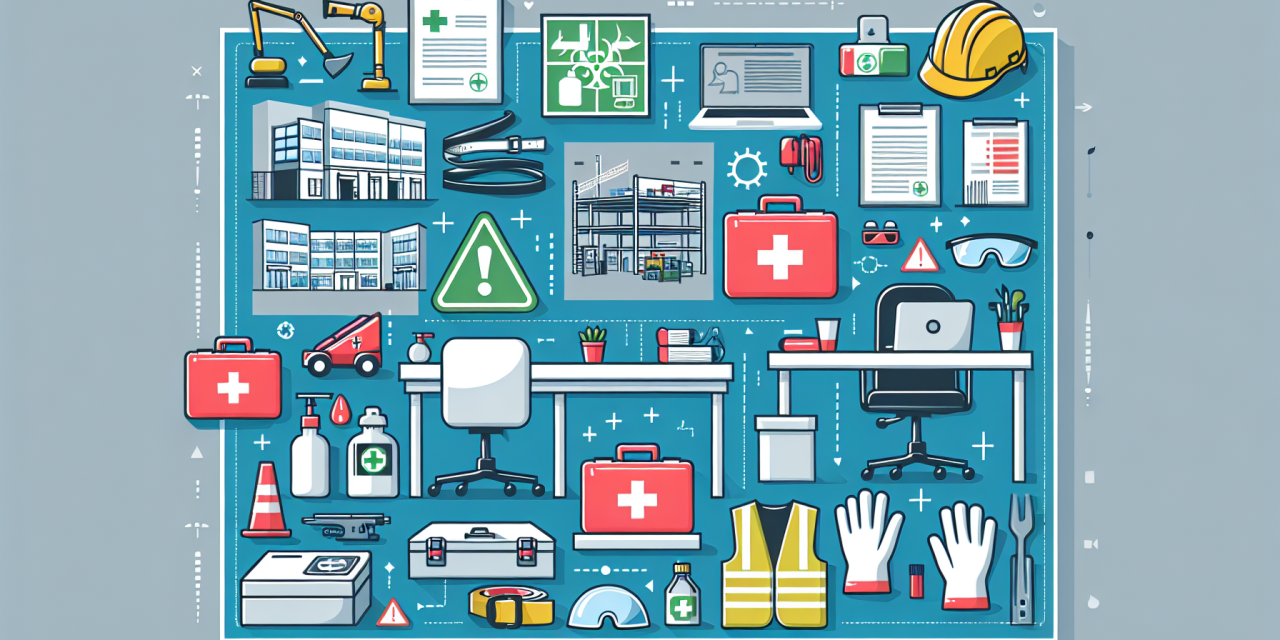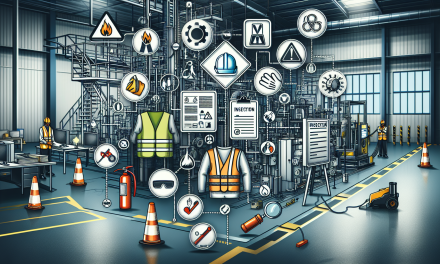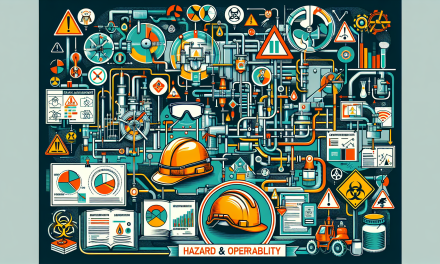Table of Contents
- Introduction
- Understanding the Importance of Health & Safety
- Key Components of Health & Safety
- Implementing Effective Health & Safety Practices
- Monitoring and Improving Safety Practices
- FAQs about Workplace Health & Safety
- Conclusion
Introduction
Welcome to a discussion on the vital topic of health and safety in the workplace. Ensuring safety for employees and visitors is not just a legal obligation; it also significantly affects productivity and morale. Companies that prioritize health and safety create a nurturing environment where employees feel valued, leading to enhanced performance and job satisfaction.
Understanding the Importance of Health & Safety
To begin with, health and safety regulations aim to protect everyone in a work environment from potential hazards. The importance of investing in health and safety practices cannot be overstated. Every year, countless incidents occur in workplaces worldwide, leading to injuries and even fatalities that could have been prevented.
Beyond compliance with laws, a safe environment fosters employee loyalty and retention. Employees are more likely to stay with organizations that prioritize their well-being. Furthermore, organizations can avoid the financial ramifications associated with workplace injuries, such as medical costs and legal fees.
Key Components of Health & Safety
Now that we have established the significance of health and safety, let’s delve into the fundamental components of effective health and safety management.
Risk Assessment
First, conducting a thorough risk assessment stands as the cornerstone of a solid health and safety plan. Risk assessment involves identifying potential hazards and evaluating the risks associated with them. It’s essential to look at both physical and psychological hazards, which often go unnoticed but can lead to significant health issues.
Regularly updating risk assessments is crucial since workplaces continuously evolve. Changes in equipment, procedures, or personnel necessitate a fresh evaluation of risks. Engaging employees in this process also enhances their understanding and commitment to maintaining a safe workplace.
Emergency Planning
Next, emergency planning must form a core part of health and safety strategies. Organizations should develop and communicate clear plans for emergencies such as fires, natural disasters, or medical emergencies. Regular drills not only ensure preparedness but also build confidence among employees regarding the actions to take during an emergency.
Providing easy access to emergency contact information and escape routes is vital. Furthermore, forming a designated emergency response team within the workforce can enhance effectiveness during actual emergencies.
Implementing Effective Health & Safety Practices
Having established the key components, the question arises: how can organizations implement these practices effectively? Below are crucial strategies.
Training Employees
Training employees is one of the most impactful methods to ensure workplace safety. Organizations should offer comprehensive training covering safety policies, emergency procedures, and the correct use of equipment. Regular refresher training helps maintain knowledge and compliance.
We recommend exploring options like the Workplace Health & Safety Training Course | Essential Compliance. This resource provides essential knowledge and skills to ensure the safety of everyone in the organization.
Communication Strategies
Communication can make or break safety efforts. Therefore, organizations must foster an open communication culture about health and safety concerns. Encouraging employees to report hazards or suggest improvements empowers them and enhances overall safety.
Utilizing multiple communication channels—such as emails, newsletters, and meetings—ensures that all employees receive vital safety information. Also, consider incorporating enjoyable team-building activities focused on health and safety to cultivate a sense of community and shared responsibility among employees.
Monitoring and Improving Safety Practices
Once safety practices are in place, monitoring their effectiveness becomes imperative. Regular audits and inspections can help identify areas that require attention. Engaging employees in this monitoring process not only keeps them involved but also improves compliance.
Additionally, organizations should establish a feedback mechanism where employees can voice their opinions on safety measures. Analyzing incident reports and trends can also provide valuable data to refine practices. Consequently, this iterative process fosters a culture of continuous improvement in workplace safety.
FAQs about Workplace Health & Safety
1. Why is workplace health and safety important?
Workplace health and safety protect employees from hazards, reduce financial costs due to accidents, and enhance employee productivity and morale.
2. What are the key components of a health and safety program?
The key components include risk assessment, emergency planning, training, communication strategies, and continuous monitoring and improvement.
3. How often should workplace safety training occur?
Training should occur regularly, with initial training for new employees and refresher courses at least annually, or whenever there are significant changes to procedures or equipment.
4. How can employees contribute to workplace safety?
Employees can contribute by reporting hazards, participating in safety training, and engaging in open communications about safety concerns and suggestions.
Conclusion
In summary, prioritizing health and safety in the workplace not only complies with regulations but also fosters a culture of care and responsibility. By implementing solid health and safety practices, organizations can ensure their employees thrive in a secure environment. For further insights, you might find helpful resources such as Essential Strategies for Effective Security Management and Asset Protection, Essential Guidelines for Effective Safety Management Strategies, Mastering Advanced Process Risk Assessment and Management Strategies, A Comprehensive Guide to Effectively Managing Health and Safety in the Workplace, and Mastering Modern Security Management and Operations for Today’s Challenges.





